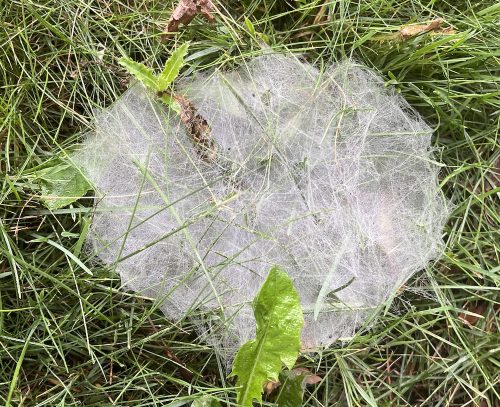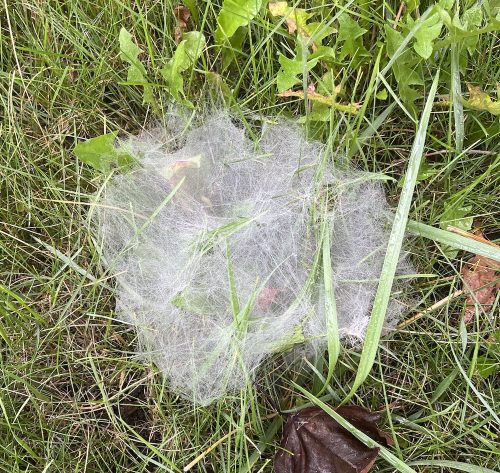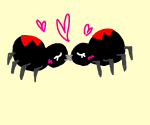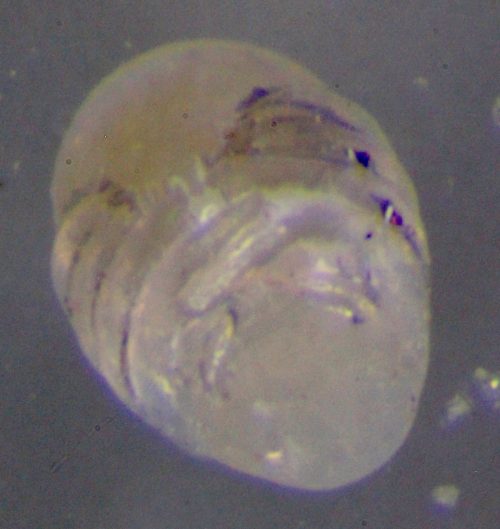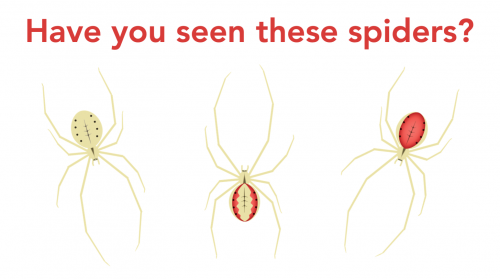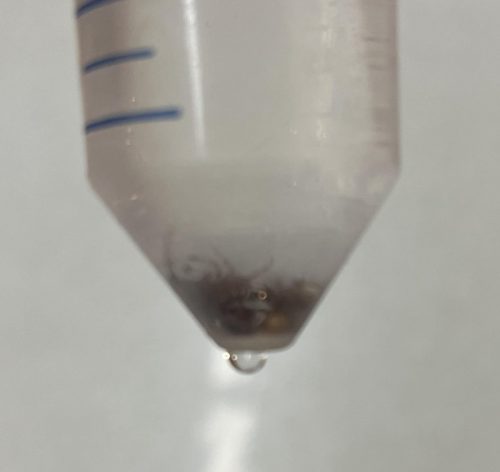We’re having a little unpleasant weather — high temperatures and sky-high humidity, to the point where this morning we were socked in with a gray mist. The good thing about that, though, is that it highlights all the grass spider webs in our lawn. These are perfect and beautiful.
Yes, we have a few weeds in our lawn. It’s a yard for diverse invertebrates, so that’s OK.
Leaves? The leaves have started to fall? It’s that time, I guess.

